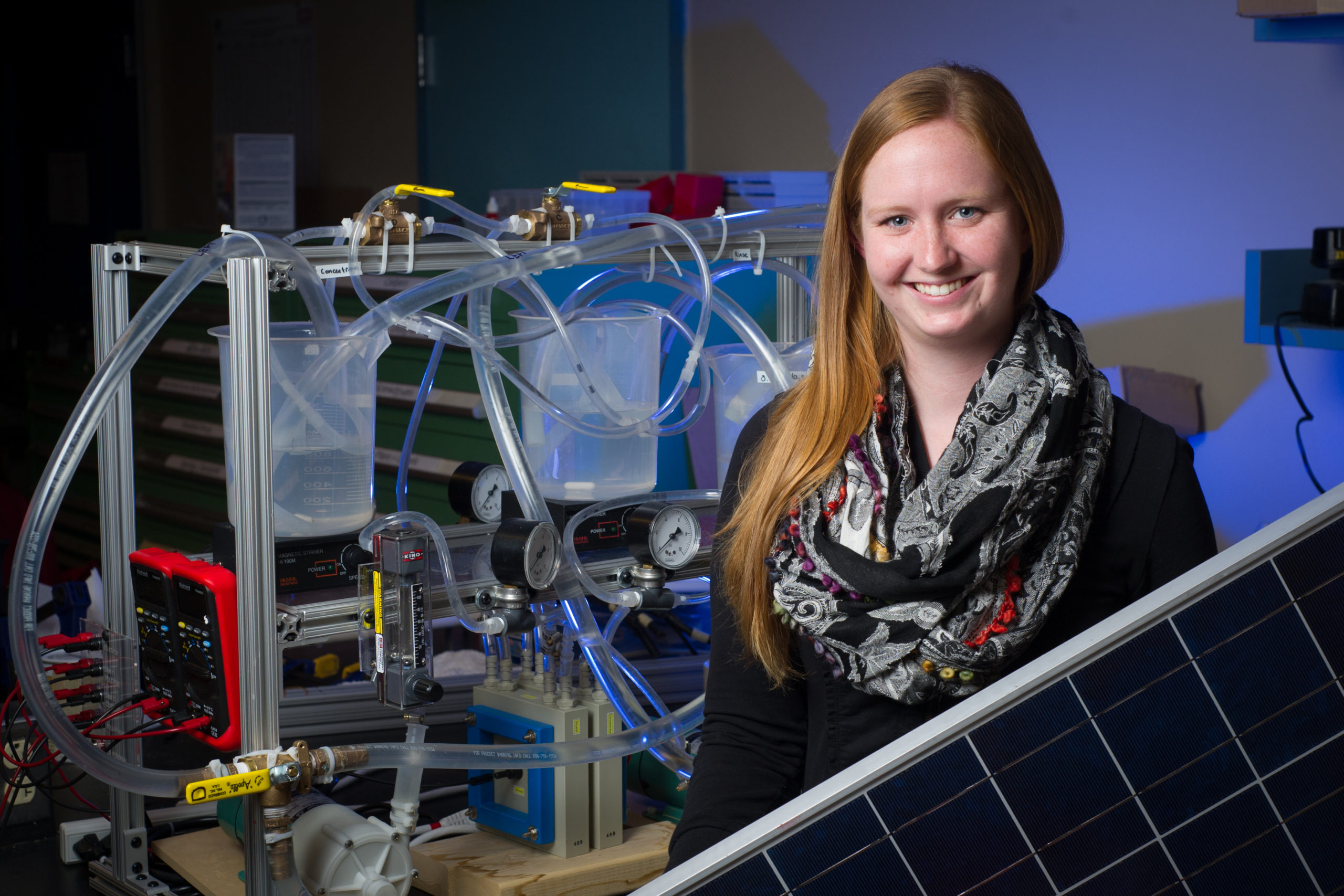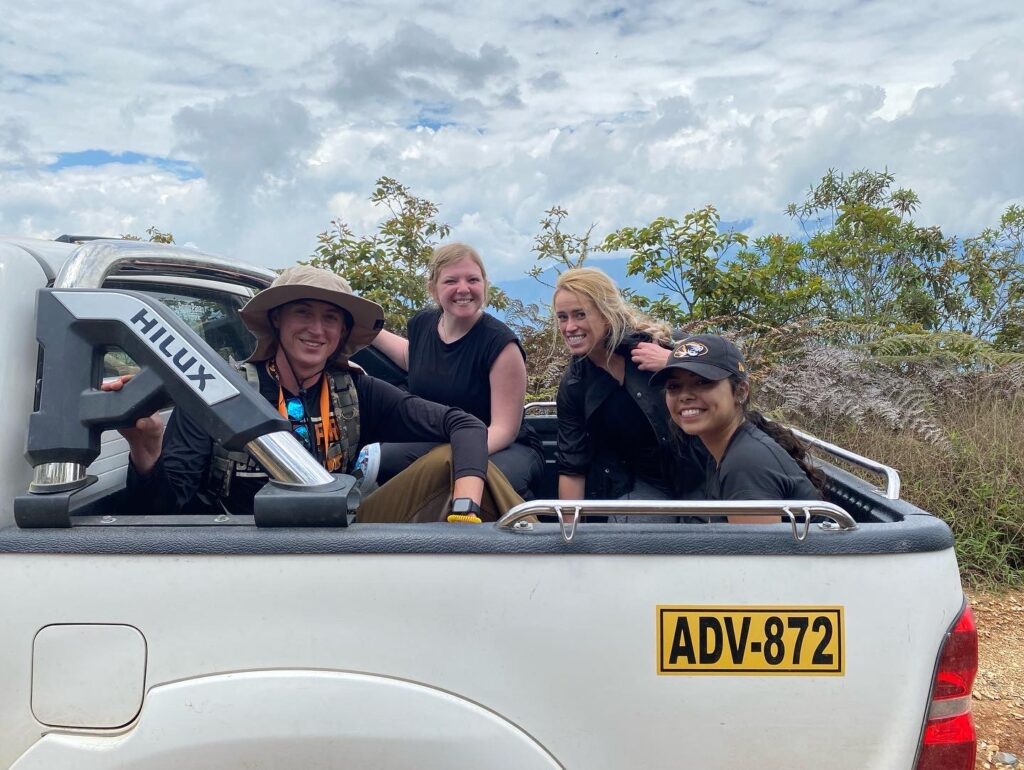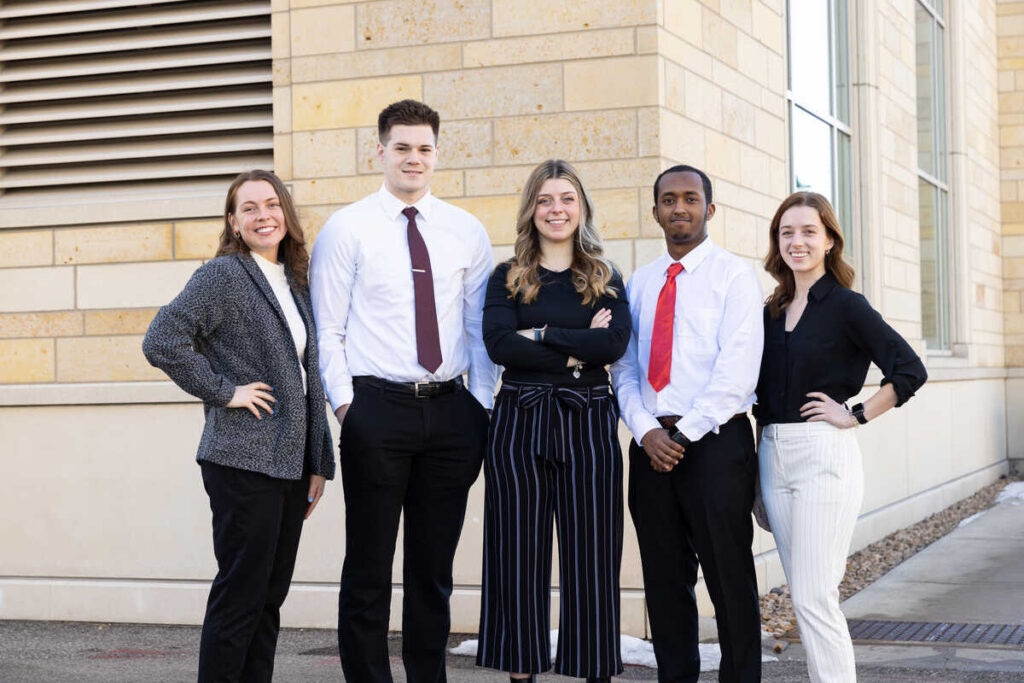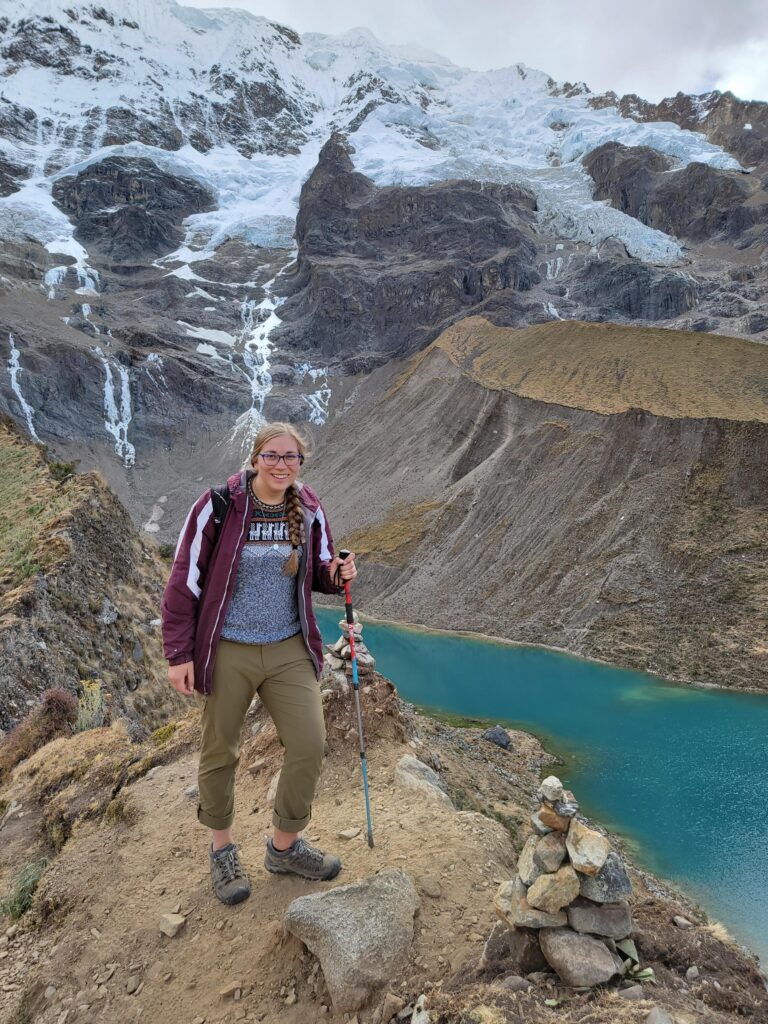Safe drinking water is readily available in Minnesota, but in other parts of the world, it’s a different story.
For instance, many rural communities in India drill wells to access groundwater sources that provide water that’s too salty to drink. They purify it by using reverse osmosis, which researcher Natasha Wright ’12 finds wasteful.
“That technology is great, but at the size of scale we’re looking at for remote villages, it requires a lot of energy, which is expensive, and wastes 40 to 70 percent of water,” Wright said.
Wright is in her fifth year at Massachusetts Institute of Technology researching a way to desalinate water that’s economically sustainable for rural Indian villages.
“The technology I’m using is electrodialysis,” Wright said. It pulls salt out of water by using voltage provided by solar panels, which require a lot less energy than reverse osmosis. “It wastes much less water, only 5 to 10 percent,” she said.
“The goal with electrodialysis is to be able to match the price with reverse osmosis off grid, where power is intermittent” she said. “We hope to impact 50 percent of the population in India.”
Wright is a graduate student fellow with MIT’s Tata Center for Technology and Design, which aims to address issues globally and is starting in India because of its water crisis and the availability of local manufacturers to create technologies. In time, she plans to bring the system to arid areas of the United States, such as ranches in New Mexico where well water is frequently too salty for livestock.
Wright, originally from Minnesota, earned her bachelor’s degree in mechanical engineering at the University of St. Thomas, her master’s degree in mechanical engineering at MIT, and is in the third and final year of her Ph.D. work in program machine and product design.
For her research work, Forbes magazine named Wright one of “30 Under 30 in Energy” for 2016.





